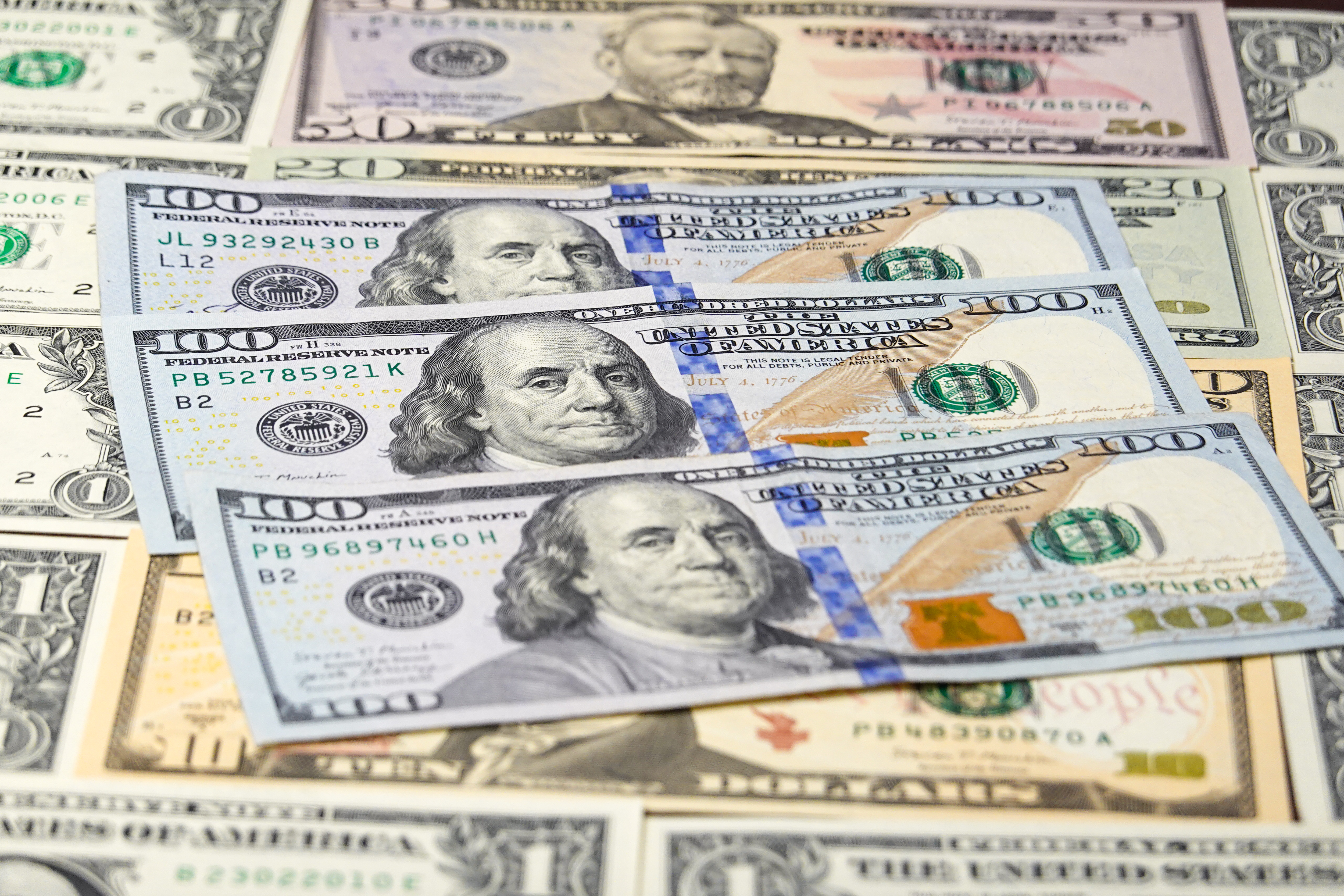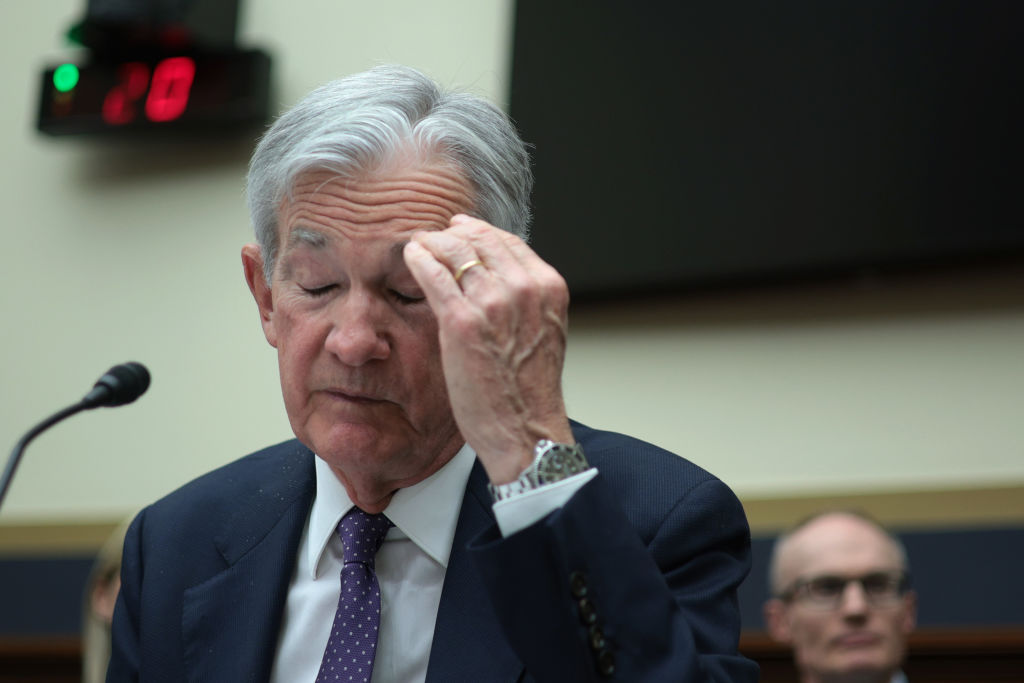Liz Ann Sonders: raging inflation and the bear market is not “70s redux”
Merryn talks to Liz Ann of Charles Schwab about how today’s raging inflation and bear market came about, what to do, and why it’s not like the 1970s stagflation, or the the 2007-2008 crash.
Subscribe to the MoneyWeek Podcast on one of these platforms:
Transcript
Merryn Somerset Webb: Hello and welcome to the MoneyWeek magazine podcast. I am Merryn Somerset Webb, editor-in-chief of the magazine, and we are recording on 15th June, 2022.
Those of you who are watching markets will know that yesterday was the day that the S&P 500 finally fell into a technical bear market, 20% off its peak, and if you’ve been holding technology shares, you will know that things are very significantly worse in that sector.
MoneyWeek
Subscribe to MoneyWeek today and get your first six magazine issues absolutely FREE

Sign up to Money Morning
Don't miss the latest investment and personal finances news, market analysis, plus money-saving tips with our free twice-daily newsletter
Don't miss the latest investment and personal finances news, market analysis, plus money-saving tips with our free twice-daily newsletter
Now, with me today to talk through all this and hopefully tell us what we should do. Sorry Liz Ann, but that’s what you’re going to have to do, tell us what we should do. I have with me today, Liz Ann Sonders, who is the chief investment strategist at Charles Schwab.
And, actually, before we even start, I’m going to say all of you, as soon as you’ve finished listening to this, go and follow Liz Ann on Twitter because she’s absolutely fascinating and lots of the good stuff I retweet comes directly from her. So, that’s @LizAnnSonders on Twitter. Liz Ann, thank you so much for joining us today. Hugely appreciated.
Liz Ann Sonders: Thanks, Merryn, for having me. Appreciate the invitation. Looking forward to our conversation. You told me there were things to talk about it.
Merryn: I know. I was racking my brain this morning. I’ll tell you what. Let’s dive right in. Here we are, finally in a full bear market, one of the most anticipated bear markets of all time, certainly the most anticipated of my career. I think most people have their own idea of what’s driving it but let’s hear from you. What do you believe the story is? How did we get here?
Liz Ann: We got here because of the major shift and reversal in the liquidity backdrop. Unique to this particular cycle, during the worst part of the pandemic was, at least in the case of the United States, the double-barrelled nature of the stimulus, both on the monetary and the fiscal side and, of course, we know both of those are a thing of the past right now.
I think the timing of the bear market or the highs, the highs having been hit, in particular for indexes like the Nasdaq and the Russell 2000, which had their highs in November directly tied to the point at which the Fed announced the start of this move toward tightening financial conditions, tighter monetary policy. I think that was the initial trigger for the move down, a reflection of this changed liquidity environment.
I also think the market has priced in some economic slowdown but probably not yet a recession, and I think a recession is arguably significantly more likely than a soft landing. I think the next phase may have to be a rerating in terms of the profits outlook. I think the second quarter earnings season that will start in earnest in a few weeks may be an important inflection point, not just in terms of earnings but profit margins, and that could be the next phase of digestion for the market.
Merryn: I like the way you use digestion. Let’s go a back a bit, then. Would you say that the Fed is, to a large degree, culpable here in that loose monetary policy has been the great bubble creator and they were very late to realise that if you keep monetary policy that loose, if you print money and pour it into people’s pockets you’re almost certainly going to get inflation? They were very late to understand that. So, can we lay the inflation, hence the money tightening, and hence the market collapse, at their door?
Liz Ann: Maybe some of the blame, if you want to call it that, can be laid at the door, but the surge in liquidity, the cause in the jump of M2 money supply going to almost 30% was both because of what was done on the fiscal side and what was done on the monetary side.
That’s very different than what happened during the Global Financial Crisis, where most of the stimulus was of the monetary variety. Of course, even Jerome Powell, himself, concedes that they probably waited too long to address it. They probably rue the day they came up with the terminology of transitory and actually put it written statements. It’s turned out to be anything but.
But it’s a combination of the sheer amount of liquidity, but also that liquidity and stimulus coming at a time when the economy was, for the most part, locked down. So, really what has happened is that liquidity went into a funnel and the funnel was into the good side of the economy, which is where this inflation problem really took hold, and into asset markets, the equity market, commodities market, the housing market.
And now we’re in the experience of that dream. Yes, the Fed concedes continuing to add to the balance sheet as recently as March probably didn’t make a lot of sense. That said, we’ll debate that forever. It’s sort of a counterfactual. If the Fed had moved off the zero bound earlier would we be in much better shape right now, or were the forces driving inflation outside of what the Fed can or cannot control sufficient enough that we might have had some version of this problem?
Again, that’s going to be something we debate forever but it’s a counterfactual, so we’ll never truly know the answer to that. But here we are and the Fed is solely focused on doing what they can to bring the inflation problem down.
Of course, monetary policy is a blunt instrument and all it can really do is try to tackle the demand side of the problem. They can’t wave a wand and tackle the supply side of the problem. They can’t bring energy prices down. They can’t speed up semiconductor production. They can’t wave a wand and get labour supply to lift. So, that’s the rub for the Fed. All they can do is try to squeeze aggregate demand via the tightening of financial conditions.
Merryn: Some would say, some do say, that there’s really no point in interest rate rises because it’s not going to make any difference to any of the main drivers of inflation.
Liz Ann: Well, it does if it squeezes aggregate demand and, quite frankly, you are starting to see that. You’re seeing it in the weakness across a number of housing metrics. You see it as recently as this morning with the squeeze on consumers and a not only weaker than expected retail sales report but negative. You’ve got real income growth in negative territory. Wages are strong but in real terms they’re negative.
So, yes, interest rates going up do tighten financial conditions and it does slow the economy, which is what the Fed concedes is what they can try to control by squeezing demand. Now, the perfect scenario of squeezing demand, squeezing job openings but not jobs, that’s a really, really tough needle to thread, and that’s why I think the needle points more toward recession because I think it’s a very difficult task.
But it is part of the solution to the problem, is rates going up, financial conditions tightening, slowing the economy, and the slowing in demand finally starts to help bring the inflation problem down.
Merryn: And the Fed does have this dual mandate that our central bank doesn’t have here. So, if it pushes the economy into recession it might succeed on the inflation front conceivably, although we don’t know because it depends what happens to energy prices and so on. It might succeed on the inflation front but then it will definitely fail on the employment front.
Liz Ann: You’re right and I think the likelihood of success on the inflation front without hitting the labour market, I think the likelihood of that is maybe slim to none. The question is how much damage needs to occur in the labour market before inflation starts to come back down to whatever level, whether truly the goal is back to the 2% target or whether, at some point, they’ll express a comfort level with the landing point maybe being a little bit higher than that.
I heard a reference, I think it was the last FOMC meeting or maybe it was the first one when they raised rates, that laid out the scenario of tighter financial conditions, tighter monetary policy, more rate hikes coming, but the dot plot showed almost no impact to the labour market, and I heard somebody refer to it as the immaculate tightening. It’s probably not possible.
No one hopes for or wishes for a recession. I don’t think the Fed is trying to engineer a recession but Powell has been, I think, appropriately honest about the fact that it might be what is, not needed to bring inflation down, but the Fed would be accepting of that as a condition in order to bring inflation down.
Given that we already had a contraction in growth in the first quarter and we’re not seeing much of a lift at all, I think a recession is, again, more likely but perhaps that helps to solve the problem more expeditiously than if somehow we managed to skate above recession level with a continued strong labour market and a Fed that needs to stay aggressive for longer. So, as you think about different scenarios, I’m not sure the recession scenario is necessarily the worse scenario if it narrows the timeframe of getting inflation under control.
Merryn: Interesting. What are the risks of stagflation in the US? In the UK we always worry about stagflation because of our experience during the 1970s, in particular because we had a wage-price spiral, relatively strong labour unions, etc. And we look across to the US now and we can see a lot of movement in labour power and more unionisation, constant demand for higher wages.
Of course, it is time that returns were rebalanced towards labour. As you said, real wages are still falling but are you concerned that we will start to see real wages rise quite dramatically? Although, of course, maybe not a concern, that’s a positive, right, because real wages have been stagnant for too long.
Liz Ann: Right. Nominal wage growth has picked up to very strong levels. The rub, of course, is that inflation is still higher. Maybe my answer to your question about stagflation is too much about semantics, so maybe it doesn’t matter. However, if you want to think about the definition of stagflation borne out of the 1970s, at least in the United States, it wasn’t really just a broad slow growth or weak growth and high inflation. The growth piece of it was more directly tied to the labour market, to a high and deteriorating unemployment rate.
And that’s not really the environment that we’re in right now. I think that there are at least as many differences between the current environment and the 1970s as there are similarities. If you generically want to define stagflation as slowing growth and still high inflation then, yes, you use that terminology.
Again, maybe it’s just semantics and it doesn’t matter. I think the better, call it, textbook term for what we’re experiencing right is now is countercyclical inflation. A partner to that definition is cost-push inflation, where inflation prices gets so high it starts to put downward pressure on demand.
And that environment that I think we’re definitively in right now followed last year’s procyclical or demand-pull inflation where, courtesy of the stimulus and the economy being locked down and the funnel into goods, we saw this huge surge in inflation because of the demand side, and that was procyclical inflation because it came in conjunction with strong growth. And now that has morphed into this countercyclical inflation.
Yes, there’s a tension on an increase and an attempt for unionisation but we don’t think we’re going to see anywhere near the kind of traction that would get us to the 70s environment. You had a different productivity backdrop in the 70s, you had a different globalisation backdrop, you had a very different demographics backdrop. So, I’m not sure what we’re seeing is a repeat of that environment. It’s still uncomfortable and it’s not helping asset markets but, if we want to be pure, I think this is not 70s redux.
Merryn: What of the idea that we don’t have to worry about inflation all round because, as we always say, the greatest cure for high prices is high prices, in that that engenders a supply response, particularly in commodities markets and we should see a big supply response from OPEC, from Venezuela, from shale producers in the US and oil prices will be back down before we know it?
Liz Ann: Well, the problem is, in terms of the supply side on energy, you have the more added rubs in this current cycle of what has been the policy direction toward clean energy and the disincentives for increased production. So, yes, near-term the United States can do what we’ve already done, release SPR, try to get more energy into the mix from OPEC, OPEC+.
Those are not immediate solutions and, of course, exacerbated by the first ground war in Europe since the mid-1940s. So that, as more than just a needle mover, means a different scenario than if we were simply dealing with a supply-demand imbalance. That said, we are experiencing across, maybe not the full spectrum of commodities, but there are areas where high prices is a cure for high prices. Copper has come down. Lumber has come down.
And I think, maybe not in the aggregate, but we’ll start to look at individual situations where either high prices ended up being the cure by virtue of a supply response or a hit to demand and/or just the effect of the economy continuing to slow as a driver of demand destruction. I think the oil outlook is less easy, not that any of this is easy, to try and gauge, again because of the unique additive of the Russia-Ukraine War.
Merryn: Now, everything we’ve talked about so far points us in the direction of lower profit margins, profit warnings and valuations looking higher than you’d think they would, given how much the market has fallen.
Liz Ann: We did see the P/E ratio in this most recent cycle get to the high 20s. That was at the end of 2020, beginning of 2021, caused that spike to, on a forward P/E basis, a level pretty much right in line with the peak that we saw back in the 1999 period of time and that, of course, elicited a lot of concerns. Is this bubble 2.0, tech bubble 2.0?
The difference, of course, is that what caused what ended up being a very short-term spike up to the high 20s in the current environment was the pandemic collapse in the E, courtesy of not only the parabolic rebound in earnings that we saw off the pandemic low, plus more recently the bear market in stocks. We’re now down into the 17-18 range, depending on what earnings estimates you use.
That may seem a bit more reasonable. The problem, of course, is that we’re in a high inflation, rising interest rate environment, so the discount rate that we need to use to discount future earnings and cash flows has now gone up, making those cash flows and future earnings less valuable.
And I’m not sure that move down to even the teens yet either reflects where we should be, given where interest rates are and inflation is but, also, I think we’re on the cusp, to the point at the beginning of your question. I think we’re at the point where, for seven quarters now, we have had analysts set the bar too low. Now, I think the bar may be set too high.
Merryn: So, there’s going to be disappointments.
Liz Ann: Yes. We’re certainly hearing it from certain companies in certain segments of the economy. I think we absolutely have seen a popping of the stay-at-home bubble, if you want to call it that and consumer-oriented major retailers, Target, Walmart, Amazon, have been very aggressively talking about we now have too much inventory, we overbuilt, we probably overhired, and at least hinting that discounting may be in the cards.
That obviously could be a hit to profit margins and also, though, could mean that not across the board, certainly not at the headline level of inflation metrics like CPI, given the weight of energy in there, but I think may be a surprise, is how quickly we shift from supply limits and disruptions to supply gluts in certain segments of the economy.
That certainly garnered the market’s attention, when Target came out and said we basically have too much inventory and I think that too much inventory story went from one-off anecdotal companies early in this phase of the cycle where you had Peloton saying too many bikes and Lululemon. But, then, when it broadens out to the Amazons and Walmarts and Targets of the world, it’s no longer one-off, it's no longer anecdotal.
That could finally be one of the downward pressures on inflation, maybe not imminently but I think it’s coming. It’s just a question of the offsets. The stickier services components of inflation are now moving up, the shelter components. What’s the offset mechanism? That’s something to be determined.
Merryn: Here’s the impossible question. How much further do you think the market has to fall?
Liz Ann: I’ll give you the honest answer. I don’t know.
Merryn: I don’t want an honest answer. I want to you make something up.
Liz Ann: We can. We can go by history, but even history has a lot of variability around ranges. But here’s some history and it is bolded, exclamation pointed, for what it’s worth, preamble to this. We’re already in a bear market. So, we know that. By the way, my answer to your question, if you were asking it in early January and we were at all-time highs and you said, okay, what are the scenarios for the market if we go into recession this year versus not, it would be a different answer. Now, we’re down 22% in the S&P, 30% for the other indexes. The average member drawdown, even for the S&P is 30%, it’s 50%. So, there’s a lot of pain already.
If you look at the history of the S&P 500 and if you look at bear markets, and I’m going to be a little loose with the definition, only because we’ve had four or five bear markets that didn’t exactly get to down 20%. You got to 19 and change. But because there’s so many of those, put that into the mix. So, bear markets defined as 19% or worse, with recession or without recession, in some reasonably similar period of time. Of course, they never correspond precisely, but a bear market that had a recession association with it, a bear market that hasn’t.
The bear markets with recessions have been, on average, a decline of about 34%, without recessions 28%. That’s not a huge difference. The bigger difference is duration, is the length of bear markets when there has been an accompanying recession at some point, some reasonably similar period of time, have lasted twice as long. So, at this stage, I think it’s probably more about how much longer this goes on than how much deeper it goes.
I don’t think that this at all resembles 2007. There are, call it, bubbles that are popping, certainly spec bubbles in segments of the market that just had no justification for the extremes in performance, obviously areas like the domain stocks, and crypto, and SPACs, and non-profitable tech, the narrative-driven thematic areas. Those bubbles have popped in spectacular fashion. There’s no question about that.
But how much worse it gets for the overall market? I don’t think this is 07. Even as these speculative bubbles burst, it’s not like when the housing bubble burst in 2006 into 2007 because there was so much leverage tied to absurdly ridiculous lending practices and trillions of dollars of derivatives tied to the mortgage market that infiltrated a highly-leveraged global financial system, such that it was literally and figuratively a house of cards.
I think we can see some of these bubbles pop, even see housing rollover, and it’s unlikely to take the entire financial system down with it. I think this is a more classic end of a cycle where growth overheats, inflation overheats, the Fed has to get aggressive, they tighten into a recession, and there you go. So, I don’t view this as one of these epic declines.
What I do worry about is hidden leverage out there in the system, some of which gets discussed more recently with the crypto implosion. Is there hidden leverage there, that we have yet to see some of the whales come to the surface? And because that’s not a very transparent market, I’m not sure about that. All I know, and I’m a crypto sceptic and I have been forever, is that associated with leverage in the crypto world the obligations associated with any kind of leverage, including leverage that might have been used to purchase crypto, the obligations associated with that leverage need to be paid in fiat dollars.
So, there’s the margin call issue that has bled into traditional markets and whether there is, call it, a long-term capital management thing out there, that’s always the unknown because bear markets are like you throw a stick of dynamite in the water and the minnows come up first and it’s not until the ripple effects where you see the whales come up. So, not quite a black swan-type thing but if the liquidity tide goes out and whoever said it, Warren Buffett, you see who is swimming naked. And I’m not sure we have fully flushed that out yet.
Merryn: And it’s most likely to be in crypto, isn’t it, because that’s the area we can see the least of below the surface?
Liz Ann: It seems so, either directly related or indirectly related, but you could also see more of what happened last year associated with meme stocks, with the problems at Archegos and Melvin Capital. So, there could be more of those types of stories too, that weren’t tied specifically to crypto but they were tied to speculation.
Merryn: So, where do we hide? Where do MoneyWeek readers go now to keep themselves safe from the ongoing carnage? Some people would say crypto, but clearly you’re not going to say that and I wouldn’t have said that either.
Liz Ann: I am not going to say that. Well, I’m not sure it fits the bill if you’re looking for a store of value, down almost 70%. I will say about crypto is when I interact with people who are experts in the space, and I’m certainly not, or real believers, I ask one question always upfront. And, I’ll be honest, I get a lot of different answers, none of which have ever been compelling enough to me, personally, with what little I know, to say all right, now I see, now I get the use case, the story.
And the question is what problem is it solving for? And I’ve gotten the store of value. I’ve gotten the don’t like the structure of fiat currencies. Don’t trust them, the systems behind it. Maybe not ironic that the dollar has been on an absolute tear when crypto has gotten just whacked. You certainly hear, a hedge against inflation. Kind of odd, then, that you’ve had a 70% drawdown in Bitcoin at the same time you’ve got inflation on a tear.
The problem with where to hide is if the goal is just safety in nominal terms, I just don’t want to lose any money, then cash, of course. But the problem is cash is a sort of losing investment, if you want to call it that, in real terms because inflation is higher than cash yields. Then, of course, you’ve had the double-down market, both on the equities side and the fixed income side.
If you had been 100% of your portfolio in energy stocks in the last year or so you would have fared very well relative to the carnage that we have seen, but I certainly would never recommend that anyone put all their eggs in one basket and play that kind of timing game.
So, really, the way to navigate through an environment like this is, number one, if you literally say I do not want to, in nominal terms, lose any money, then you only have one choice, is not to be invested. The rub, of course, is then what happens when things start to recover, now you’re sitting in cash. So, there’s the dual timing decision of the get out, get in. And I always say neither get out or get in is an investing strategy. That’s gambling on two moments in time and I don’t know any successful investor that became successful by that all or nothing gambling.
So, it’s boring to talk about but ultimately you’ve got to go back to the disciplines of make sure you’re diversified across and within asset classes. This is not a time to take too much risk. Avoid the next hot thing, which now it’s obvious that we should have avoided things like meme stocks.
Rebalancing is a beautiful strategy. It’s a way to take advantage of volatility and trim into strength and add into weakness and stay in gear by taking advantage of the big swings, but it doesn’t mean you are going to eliminate the downside. It keeps you disciplined and it keeps you, call it, in the game. And the lack of rebalancing, I put this in a report that I just published on Monday. It was yet again another update to a report I first wrote in 2008 called Panic is Not a Strategy.
And, sadly, I’ve had to update it a few times, including this past Monday, but I added into it. It is a really simple rebalancing analysis. If you do a really basic 60/40 portfolio, 60% stocks, 40% bonds, and most investors have a more sophisticated asset allocation than that, but just for math’s sake, let’s do 60/40.
If you were 60/40 in 07 and you did no rebalancing, by the beginning of 09 that had flipped. You were now 40/60. So, now, with the market about to launch into an epic 12-year bull market, you were 40% equities instead of 60%. So, there’s one example.
Let’s now say it’s 2009 and you’re at 60/40 or you rebalance to 60/40, but then you didn’t do any rebalancing subsequently. By the time you got to the beginning of this year you were 90% equities. So, it forces investors to do what we know we’re supposed to, which is buy low, sell high. That’s the only way to try to take advantage of an environment like this if you didn’t have the foresight to anticipate it and make an extreme move of moving everything into energy stocks.
Merryn: Oh, don’t we all wish we’d done that. Liz Ann, one final question. Gold. A lot of MoneyWeek readers love gold and hold a reasonable amount of it in their portfolios and they have been protected to a degree by their gold holdings during the last six months or so. Would you be a holder of gold?
Liz Ann: We generally, for investors that would like that, call that concept, to some degree, a bit of an inflation hedge. It’s got a sporadic, not a perfect track record, as being an inflation hedge but it’s got at least as good a track record of also being a hedge against global instability of any variety, sometimes geopolitical, sometimes military.
So, we generally say for investors that want that type of protection, that having a small position in gold probably does make sense. Sometimes gold can see sentiment swings, much like sentiment at extremes can be a contrarian indicator for equities. The same for other asset classes like precious metals. The only potential good news is I think a lot of attention, and maybe interest and buying in gold that probably would have otherwise occurred in the past year or so with this inflation backdrop, got funnelled instead into crypto.
So, the good news is, even where we are now, we don’t have that questionable sentiment backdrop where everybody is on the bull side of the gold case, where in the past that sometimes has been enough to cause a move down, even if the fundamentals didn’t change to suggest that. As you already probably can tell, if somebody said, you’ve got two choices, crypto or gold for, whatever, 2% of your portfolio, I think you now know what I would have and would choose.
Merryn: I think we’re as one on that one, Liz Ann. Can I just say thank you so much for joining us. You’ve been absolutely wonderful and so interesting and incredibly helpful, and I think MoneyWeek readers will appreciate it enormously. And I know that anyone who listens to this will go straight off to follow you on Twitter.
Liz Ann: Thank you.
Merryn: Thank you very much for joining us.
Liz Ann: Thanks, Merryn.
Merryn: MoneyWeek readers, you know if you want to hear from us, you know where to go, MoneyWeek.com, where you can also sign up for our daily newsletter, Money Morning, and follow us on Twitter @MoneyWeek or @MerrynSW for me, @John_Stepek for John. And please do leave us a review on your podcast provider of choice. It is only by leaving us reviews that we get our listening numbers up and we can manage to get fantastic guests like Liz Ann Sonders on. So, please go and do that. Liz Ann, thank you so much. I hope we will talk to you again.
Liz Ann: Thanks, Merryn. Really appreciate it.
Get the latest financial news, insights and expert analysis from our award-winning MoneyWeek team, to help you understand what really matters when it comes to your finances.
MoneyWeek is written by a team of experienced and award-winning journalists, plus expert columnists. As well as daily digital news and features, MoneyWeek also publishes a weekly magazine, covering investing and personal finance. From share tips, pensions, gold to practical investment tips - we provide a round-up to help you make money and keep it.
-
 London claims victory in the Brexit wars
London claims victory in the Brexit warsOpinion JPMorgan Chase's decision to build a new headquarters in London is a huge vote of confidence and a sign that the City will remain Europe's key financial hub
-
 Rachel Reeves's Autumn Budget: What it means for the UK
Rachel Reeves's Autumn Budget: What it means for the UKOpinion A directionless and floundering government has ducked the hard choices at the Autumn Budget, says Simon Wilson
-
 Canada will be a winner in this new era of deglobalisation and populism
Canada will be a winner in this new era of deglobalisation and populismGreg Eckel, portfolio manager at Canadian General Investments, selects three Canadian stocks
-
 The challenge with currency hedging
The challenge with currency hedgingA weaker dollar will make currency hedges more appealing, but volatile rates may complicate the results
-
 Can Donald Trump fire Jay Powell – and what do his threats mean for investors?
Can Donald Trump fire Jay Powell – and what do his threats mean for investors?Donald Trump has been vocal in his criticism of Jerome "Jay" Powell, chairman of the Federal Reserve. What do his threats to fire him mean for markets and investors?
-
 Best-performing stocks in the S&P 500
Best-performing stocks in the S&P 500We take a look at the best-performing stocks in the US equity market. Are there opportunities outside of Big Tech?
-
 Freetrade’s new easy-access funds aim to beat top savings rates
Freetrade’s new easy-access funds aim to beat top savings ratesFreetrade has launched an easy-access exchange traded fund (ETF) range - here’s how the ETFs work and how they compare to the savings market
-
 What is Vix – the fear index?
What is Vix – the fear index?What is Vix? We explain how the fear index could guide your investment decisions.
-
 Go for value stocks to insure your portfolio against shocks, says James Montier
Go for value stocks to insure your portfolio against shocks, says James MontierInterview James Montier, at investment management group GMO, discusses value stocks and slow-burn Minsky moments with MoneyWeek.
-
 The case for dividend growth stocks
The case for dividend growth stocksMany investors focus on yield alone when looking for income, that’s a mistake says Rupert Hargreaves. It’s the potential for dividend growth that really matters.

